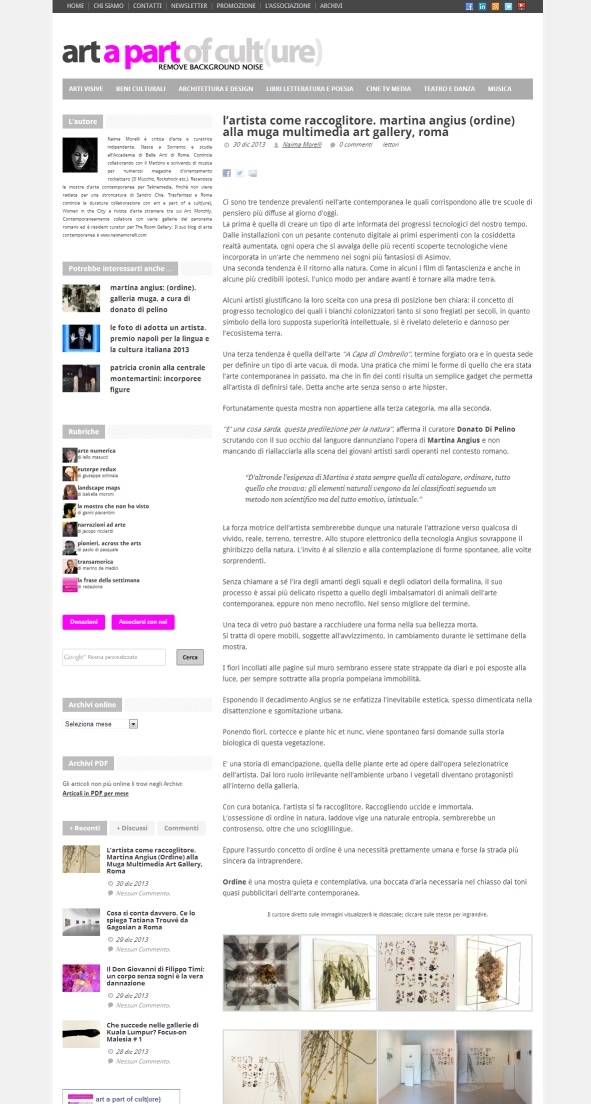
The Italian web magazine Art a Part of Cult(ure) has just published my review of Martina Angius’ exhibition “Ordine” curated by Donato Di Pelino at Muga Gallery, Rome.
Read More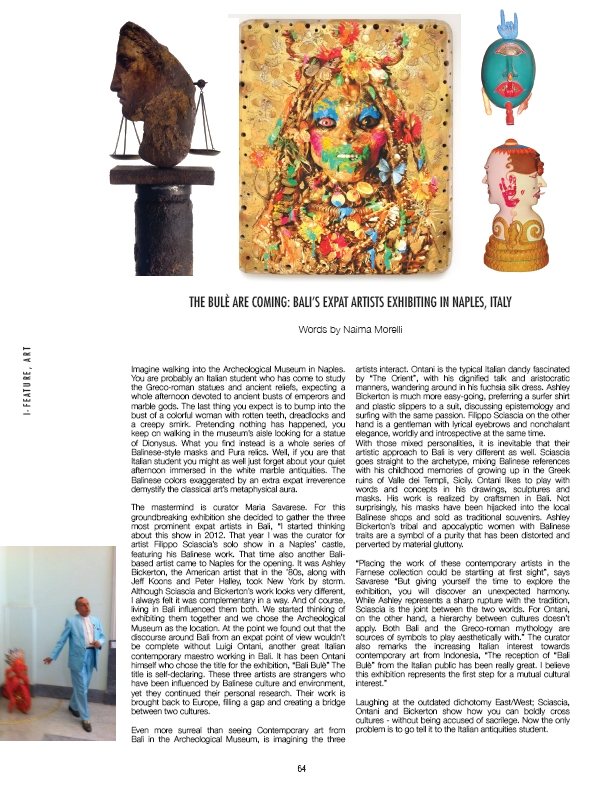
The Indonesian magazine I Magazine Bali has just published my review of the Bali Bulè exhibition at Museo Archeologico in Naples, featuring artists Bickerton, Ontani and Sciascia.
Here the link to the magazine website
Read More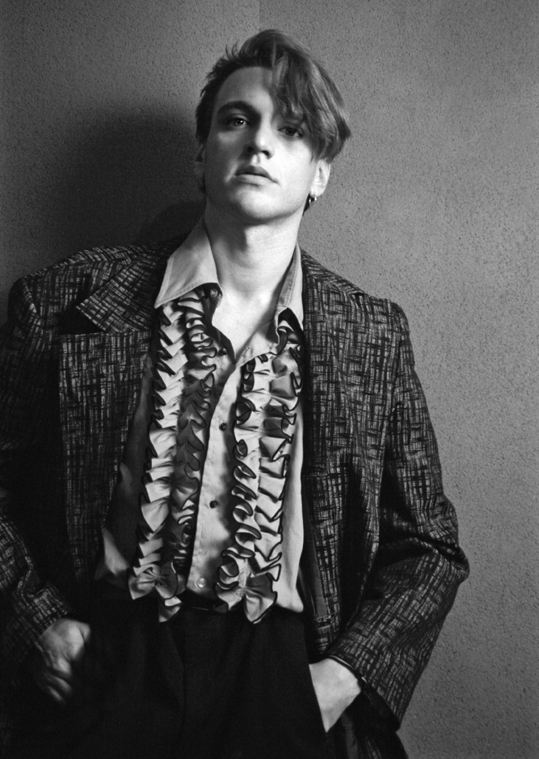
If you think that in the eighties in Italy there were just Loredana Bertè, Donatella Rettore and the Diaframma to dress weirdly, you are wrong. The eighties in Italy were truly rad. (If you are not Italian there are good chances you never hear of Loredana Bertè, Donatella Rettore and especially the Diaframma).
Anyways, if you have any doubt about the radness of the eighties in Italy, you should check st. foto libreria galleria, ironically just two steps away from the Vatican. You will be surprised to know that all the people looking at you from the pictures on the wall were actually everyday roman people, except that by night they transformed into dark eighties rockers.
The photographic work of Dino Ignani is anthropological. The portraits are almost segnaletic pictures, with a neutral background and no particular choice of light or pose.
He was “archiving” the underground dark scene of Rome. All these young people were photographed in roman discos and they dressed up for the occasion.
“It was startling to see all these people coming at the opening of the exhibition” said curator Paola Paleari ” you can tell that there were the same people of the pictures, but they look cleaned up from that dark look and even their attitude was different”.
It was an interesting choice from the st gallery to cover this less-known period of the Italian recent history, focusing on that particular community. For some it would be nostalgia, for some others even inspirational. Eighties are back.
Read More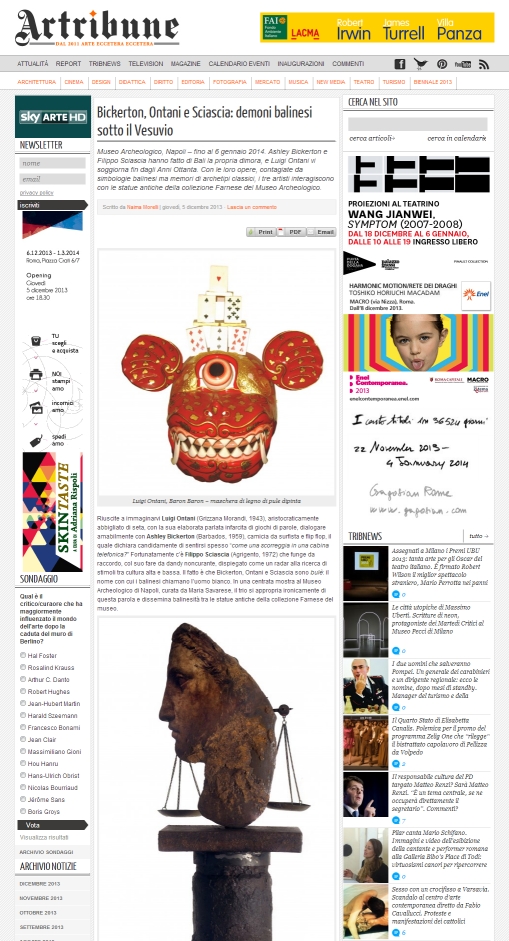
The Italian magazine Artribune has just published my review of the Bali Bulè exhibition at Museo Archeologico in Naples, featuring artists Bickerton, Ontani and Sciascia.
Read More
The Australian magazine Trouble has just published the interview I had in Perth with artist Tarryn Gill. The interview is part of my reportage about the Perth Art Scene.
Here the link to the interview
Here the link to the online version of the magazine
Read More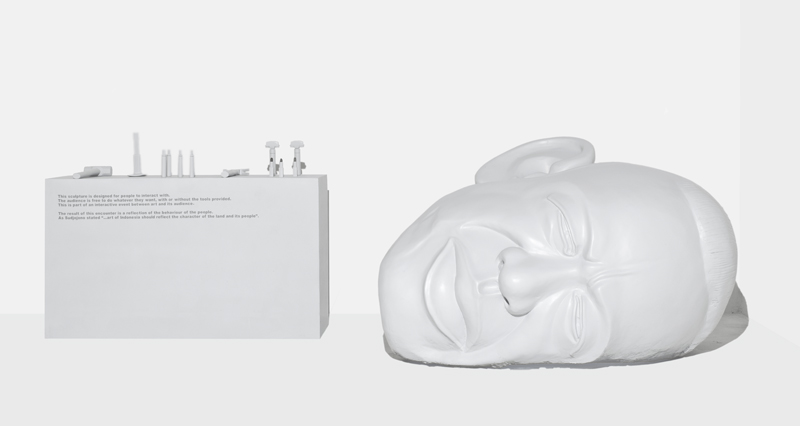
I met Marco Cassani in Bali during my reportage about contemporary art in Indonesia. What supposed to be an interview has become a lively chat about Marco’s art, hallucinogenic experiences and, of course, Bali. A month ago he sent me this mail about his new work that is going to be exhibit at “Imagining Indonesia, Tribute to S.Sudjojono” on the 23rd of November at Tonyraka Gallery in Bali:
Dear Naima,
How are you?
I am sending you the picture of my new work for the group exhibition
Tribute to Sudjojono at Tonyraka gallery on November, 23rd.
The work, entitled ‘CHANCE Project 2, Tribute to S. Sudjojono’, consists in:
1) a sculptor that represents the Sudjojono head (cement, 140 x 90 x 90 cm)
2) a box (wood, 120 x 70 x 45 cm) with a text (“This sculpture is designed
for people to interact with. The audience is free to do whatever they
want, with or without the tools provided. This is part of an interactive
event between art and its audience. The result of this encounter is a
reflection of the behaviour of the people. As Sudjojono stated Еarth of
Indonesia should reflect the character of the land and its people.”)
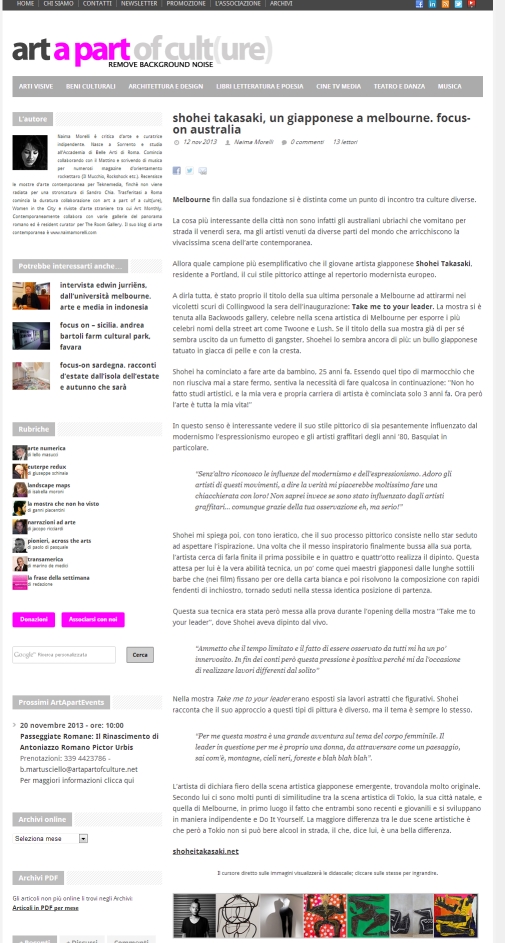
The Italian web magazine Art a Part of Cult(ure) has just published my interview with the Japanese artist Shohei Takasaki. The interview is part of my reportage about emerging artists in Melbourne.
Here the link to the interview
Read More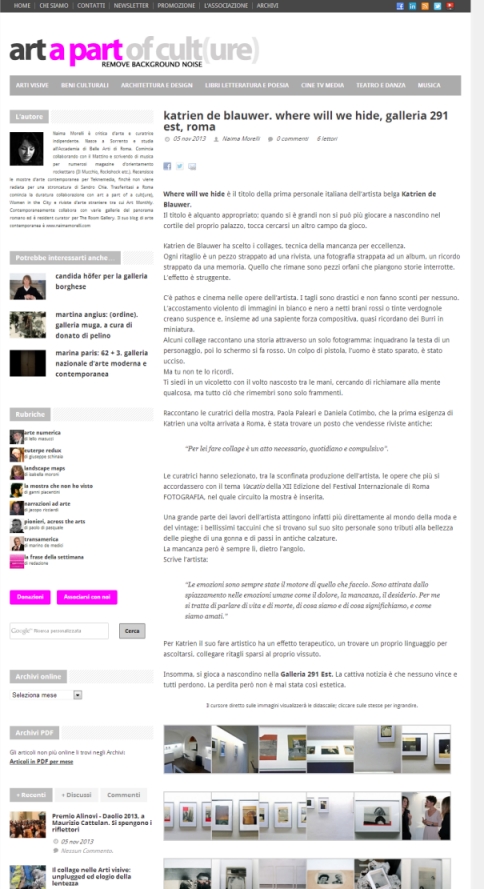
The Italian web magazine Art a Part of Cult(ure) has just published my review of the Katrien de Blauwer’s exhibition “Where will we hide” at Galleria 291 est, Rome.
Here you are the link to the review
Read More
My article “An artist in a waitress’s body” is in the November issue of Art Monthly Australia. The article features interviews with artsHub director Deborah Stone and artists Georgina Lee and Boe-Lin Bastian. The interview is part of my reportage about emerging artists in Melbourne.
Here the link to the Art Monthly Au website
Read More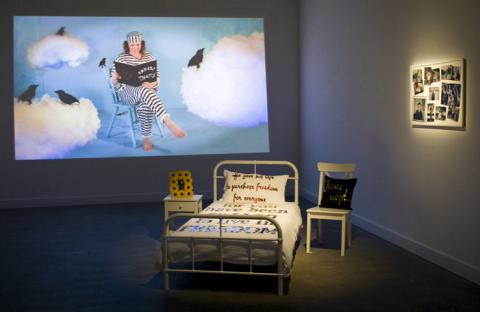
Bindi Cole is one of the first artists I interviewed in Melbourne.
I come to know about her work during the presentation talk of “Melbourne Now” exhibition at the NGV.
Her work span through different mediums, from photography to installation, and the themes are often related to her personal history and aboriginal issues.
She constantly challenges stereotypes, revealing overlooked complexities behind communities and identities. In the series “Not Really Aboriginal” she photographed her family and herself with black painting on their face. The title refers to the accusation that some people addressed to her, that of not being “really” Aboriginal, because of her anglosaxon aspect and her light skin.
One of her most challenging work is “Sistagirls”, a photographic series about the transgender community of the Tiwi Islands.
Recently Bindi Cole decided to reflect on her personal history, mainly through video and installations. Even if she went through tough times, her vision underlies a constant optimism and reveals the beauty of the human experience.
I find her recent installation with emu feathers “I Forgive You) (currently exhibited at Queensland Art Gallery) just moving.
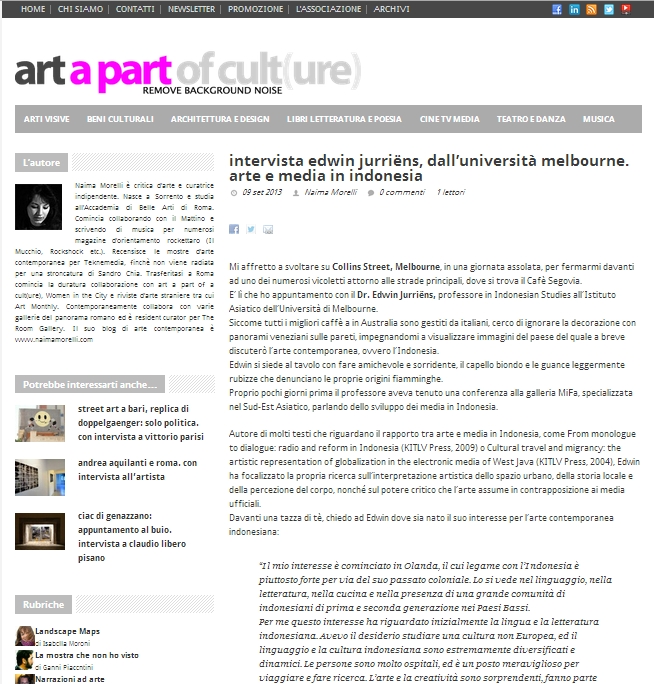
The Italian web magazine Art a Part of Cult(ure) just published the interview I had in Melbourne with Edwin Jurriëns, lecturer in Indonesian Studies at Melbourne University. The interview is part of my reportage about contemporary art in Indonesia.
Here you are the link to the interview
Read More